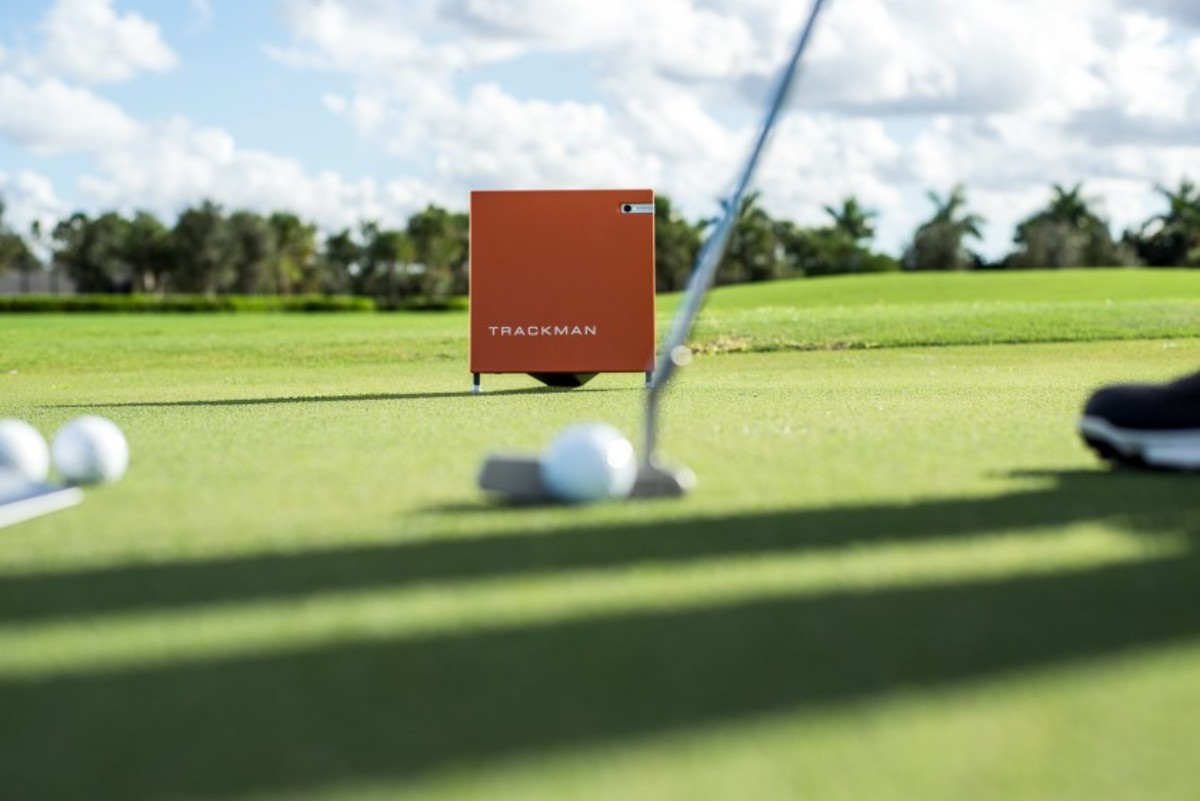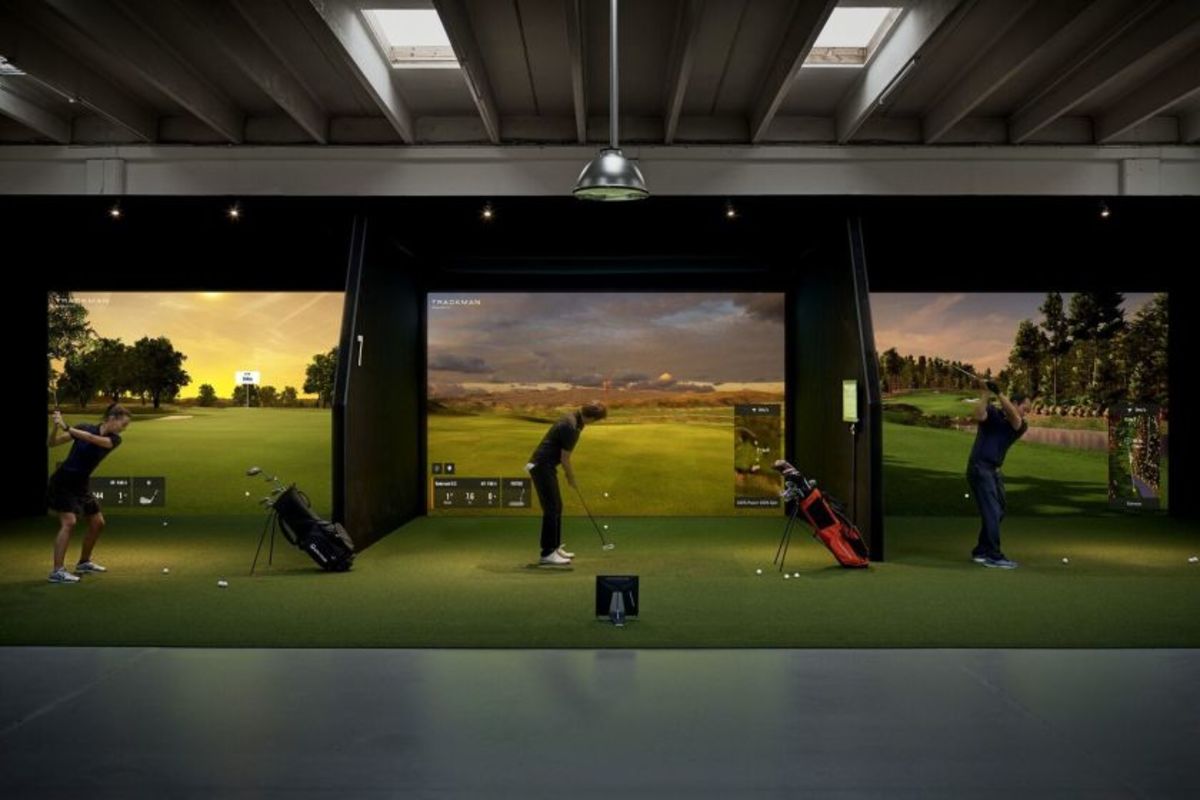TrackMan data creates new age golf instructor

When Dustin Johnson elevated to the top spot in the Official World Golf Ranking in February 2017, it wasn’t coincidental.
Four years prior, Johnson had been tied for 113th on the PGA Tour in approach shots from 50 to 125 yards. That ghastly statistic stood out much like an unsightly cold sore on a pubescence teen. So Johnson assiduously committed to performance data. The numbers largely played a role in his ascension to first in the category by 2016. Maybe more important, that data likely contributed in stringing together the fifth-longest streak (64 weeks) as the world’s top player.
To master his short game, Johnson leaned on the TrackMan, a technological Doppler radar device that accurately measures the trajectory of a golf ball from launch to landing: the speed, spin rate, carry and land angle. It’s the same technology that tracks missiles into the atmosphere and back.
It’s not just a ball measuring device. The gadget uses 3D analysis to break down the DNA of a swing, too — speed, attack angle, club path and face angle. There are more than 30 data parameters that a user can measure on any given shot.

“You would think, just from a personality perspective, he’d be one the last guys to get dialed in and get technical with the golf swing,” said Kyle Butler, TrackMan Golf's director of sales, Western U.S. and PGA member, of Johnson. “But ultimately he purchased a TrackMan and really focused on improving his wedge play.”
At last year’s Valspar Championship, when asked about his most important training aid, Johnson said: “I would probably pick TrackMan. Just because I know I have the numbers of how the ball should be flying, and if I'm doing that correctly, then I feel like the game's in pretty good form.”
Butler estimated that when he first started with the company in 2015, he would go to PGA Tour events and see about 30 percent of the field using TrackMan primarily on practice round days. Go to a Tour event now and Butler says it’s hard not to spot the little orange box behind players.
According to Butler, more than 90 percent of the top 100 players on Tour have purchased the device. The company has no endorsement deals with players.
TrackMan’s backstory is compelling. CEO and co-founder Klaus Eldrup-Jorgensen, a Danish national amateur champion, and his brother, Morten Eldrup-Jorgensen, owned driving ranges in Scandinavia and wanted to provide technology data to their customers. They eventually contacted Fredrik Tuxen, an engineer working at a Copenhagen company that had been awarded U.S. missile defense contracts because of its esoteric high-caliber Doppler tracking.
The Jorgensen brothers wanted to know if the same technology could be used to track golf balls. Tuxen saw the potential and quit his job, freeing up time to develop the TrackMan in his garage.
In 2003, TrackMan established its headquarters in Vedbaek, Denmark. After demonstrating the product to Callaway, Mizuno, Nike, Ping and TaylorMade, the mega-giant golf equipment manufacturers became customers. The TrackMan, which has iterated to TrackMan 4, uses Dual Radar Technology — employing two radar systems to obtain maximum data quality and increased pick up rate.
In layman’s terms, TrackMan is a fully wireless and easy-to-use portable outdoor mechanism. It takes less than 30 seconds to set up and currently the apps for TrackMan 4 only work with iOS devices. Any analysis parameters within can be commingled and displayed. The same concept applies to its indoor simulator product.
The company is working on a platform to be used on all mobile solutions, gauged to be released later this year.
“TrackMan won’t tell you how to fix club path or face angle,” Butler said. “We’re just telling you what the data says. It’s ultimately like a scale in someone’s bathroom — giving you the facts whether you like it or not.”
It’s not cheap. An indoor TrackMan 4 unit starts at $19,000, with the indoor/outdoor product priced about $25,000. Turnkey simulator solutions start at $48,990, which includes screen, projector, turf, overhead projection, side projection and computer installation.
Do you have a golf buddy who should practice putting?
— Trackman Golf (@TrackmanGolf) April 16, 2020
Here are some TrackMan Putting Stats 🤓#TrackManPutting #PerformancePutting #UnleashYourPotential pic.twitter.com/hcYTKIfeFj
All that said, TrackMans are becoming nearly as ubiquitous as cell phones or, rather, an evolvement of how the game has grown. Everyone from club fitters to instructors are buying in.
The University of Texas, for example, has six TrackMans — an indicator of how competitive Division I golf continues to be. It’s all about the data consumption era.
“With all the players traveling now with TrackMan, if that was going to be the case years ago, it would have been hard for me to believe it would be normal for a pro traveling with a $25,000 unit,” said Purdue University head golf coach Rob Bradley, who once played on the Web.com Tour. “But it provides the data on every swing and I see the benefit.”
More than “500,050 billion shots have been tracked across the globe since 2004, and all shots go back to a server and database in Denmark,” Butler said.
In addition, diverse testing can be set up within the software. For instance, a feature called the Combine is predicated on a 60-shot exam, based on specific distances that culminate in a score. The Test Center, another effective attribute, can be utilized with coaches to build custom evaluation in which the device puts the player in a round-like situation.
Butler provided one example.
“For the Tour player, in using TrackMan, he says, ‘I’m aiming at the yellow flag, I want to start 5 yards right and cut right on the target line. Did I do that? Yes or no? Did I hit it the right distance?’” said Butler. “It tells you within 1 foot for every 100 yards where that ball did land and why the ball curved the way it did. Oh, [the data says] your club path was 4 degrees to the left and your face was open 2 degrees relative to the path. Thus, it created this beautiful 5-yard fade you were looking for.”
In Johnson’s case, he set data parameters over three years and focused on wedge analysis, thereby improving his short game. The data crystallized why he may have sunk to 113th in the Tour’s approach shot category.
Johnson has become such a disciple that his Dustin Johnson Golf School in TPC Myrtle Beach in Murrells Inlet, S.C., leverages TrackMan data as a primary teaching tool. Allen Terrell, the director of golf at Coastal Carolina University in Myrtle Beach, S.C., helped open the school.
During his time at CCU he coached Johnson, and more than 20 NCAA All-Americans and 20 conference players of the year. TrackMan data points are utilized because film doesn’t capture everything.
“What the golfers feel and what is actually happening can be pretty far apart,” said Terrell on the Johnson school website. “TrackMan helps convince and qualify for a player that he’s on the right path to improvement. … It quantifies practice and improvement.”
U.S. Open champions Brooks Koepka and Justin Rose became converts, too.
At last year’s U.S. Open at Pebble Beach Golf Links, a venue known for its unpredictable winds coming off the rugged Carmel Bay coastline, Rose relied on data.

“We've used TrackMan a lot to try to gauge exactly how much the wind is taking off the ball,” Rose said. “TrackMan has a great feature called "normalize," so you can hit the ball into the breeze, you can see your 5-iron go 170 yards, you can press the normalize button and it will say it should have gone 205. So into a 12, 15 mile-an-hour breeze, you can see how much that is knocking off.”
Simply put, the data being generated sounds unparalleled and extraordinary. However, since there is a finite number of professional players, instructors and courses, TrackMan is cognizant of its market. There are many other potential users the company would like to tap into. Also, on the horizon, at a more affordable rate for the casual golfer.
With one of golf’s core problems about the time it takes to play, TrackMan would like to target more indoor users. After all, its slogan for indoor golf is “We’re serious about fun,” and the company took steps to mean it. Five years ago, it relied on a third-party business to provide the front-end simulator experience. Three years ago, TrackMan purchased another company that specialized in that. Now TrackMan develops in-house graphics, courses, games — thusly controlling the full simulator gamut.
In the end, there may be those who question the over-saturation of popcorn-like data. Is it too much? Major League Baseball and the National Hockey League are full bore on metrics. Butler conjured up an analogy.
“If I was playing soccer and felt a little snap in my knee, and I went to my local doctor and said, ‘You know, doc, my knee is a little sore,’ and he says, ‘Let’s get an MRI,’” Butler said. “I want the best piece of technology out there to be able to allow my doctor, who is an expert, give me a diagnosis of what’s truly going on.
“TrackMan is a piece of technology that gives you the facts within a very high tolerance of one another, and how you interpret what the MRI or the TrackMan computes is completely up to the player or coach. That data is powerful.”
Sign up to receive the Morning Read newsletter, along with Where To Golf Next and The Equipment Insider.
